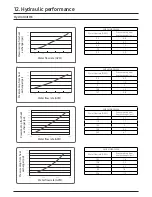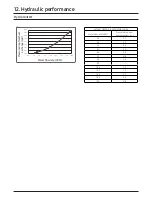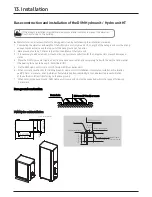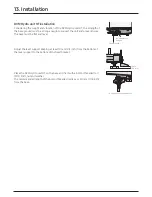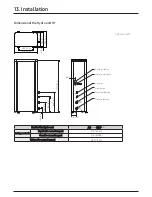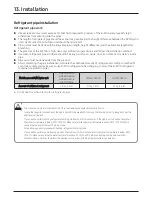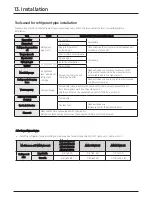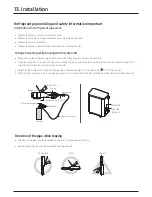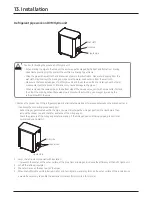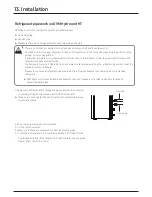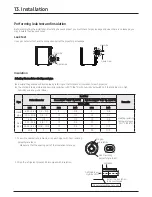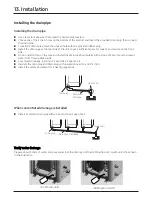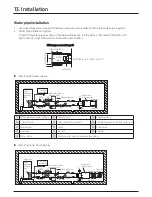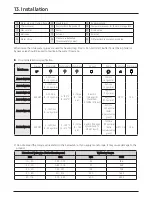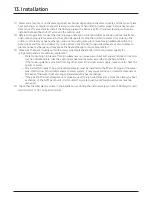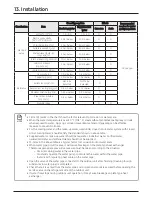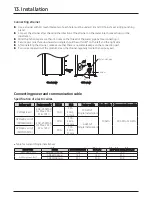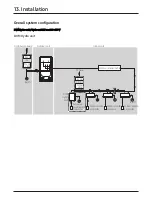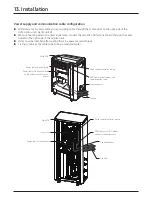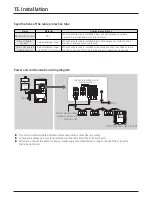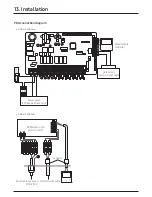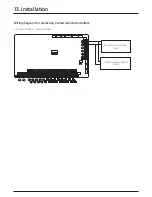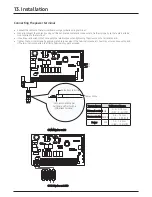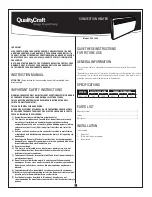
1
3
. Installation
Performing leak test and insulation
Before completing the installation (insulating hose and pipes), you must check for gas leakage and when there is no leakage, you
may insulate the pipes and hoses .
Leak test
Use a gas detector to check the connection part of the pipes for gas leakage .
Gas side
Liquid side
Gas side
Liquid side
Insulation
Selecting the insulator of refrigerant pipe
f
Insulate the gas pipe and liquid pipe by referring to the thickness of insulation for each pipe size .
f
The standard temperature and humidity condition is 30 °C (86 °F) with humidity below 85 % . If the condition is in high
humidity, use one grade thicker .
Pipe
Outer diameter
Insulator
Remarks
General [30 °C (86 °F), 85 %]
High humidity [30 °C (86 °F), over 85 %]
EPDM, NBR
mm
inch
mm
inch
mm
inch
Liquid
pipe
6 .35 ~ 9 .52
1/4 ~ 3/8
9
3/8
9
3/8
Heating resisting
temperature over
120 °C (248 °F)
12 .7 ~ 50 .8
1/2 ~ 2
13
1/2
13
1/2
Gas
pipe
6 .35
1/4
13
1/2
19
3/4
9 .52 ~ 25 .4
3/8 ~ 1
19
3/4
25
1
28 .58 ~ 44 .45 1 1/8 ~ 1 3/4
19
3/4
32
1 1/4
50 .8
2
25
1
38
1 1/2
1 . To avoid condensation problems, wrap each pipes with heat-resisting
polyethylene foam .
- Make sure that the opening part of the insulation to face up .
No gap
Insulation
Heat-resisting
polyethylene foam
2 . Wrap the refrigerant pipes and drain pipes with insulation .
Insulation
Install the insulation
to be overlapped
DVM Hydro unit /
Hydro unit HT
Fix securely without any gap .

